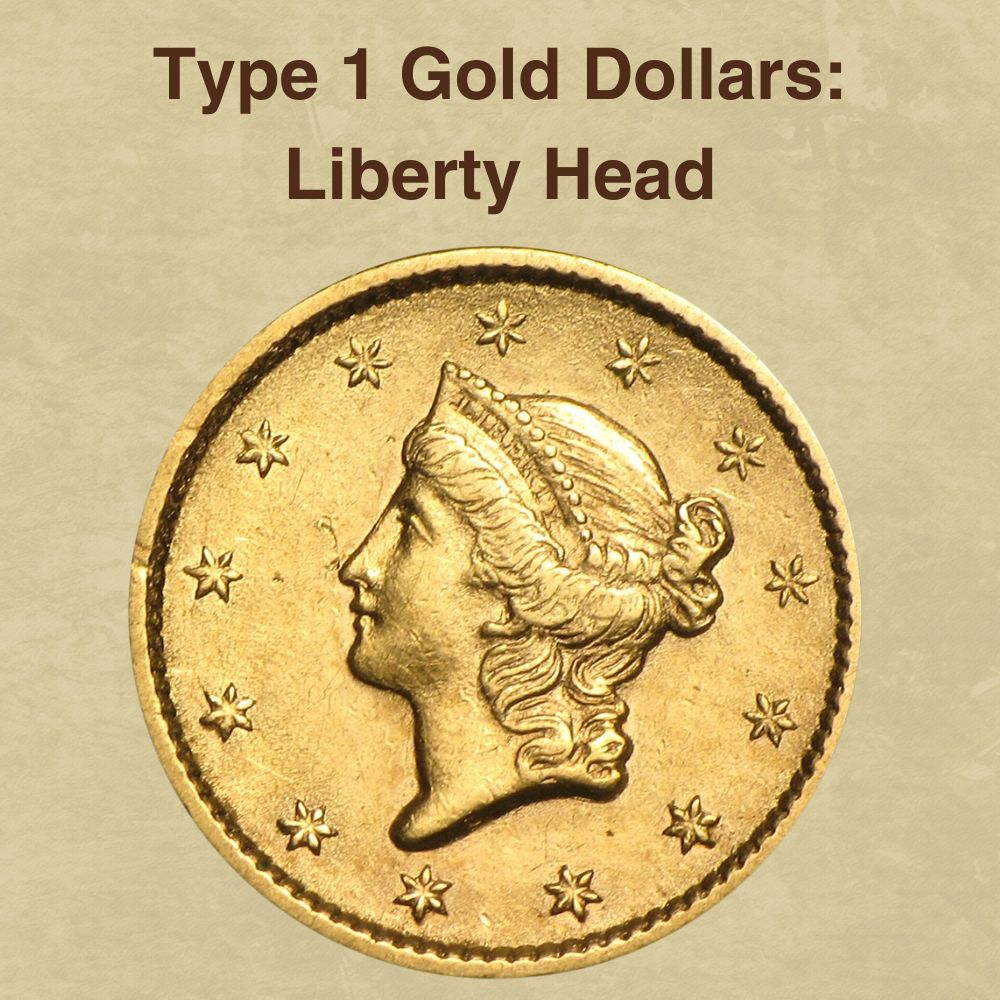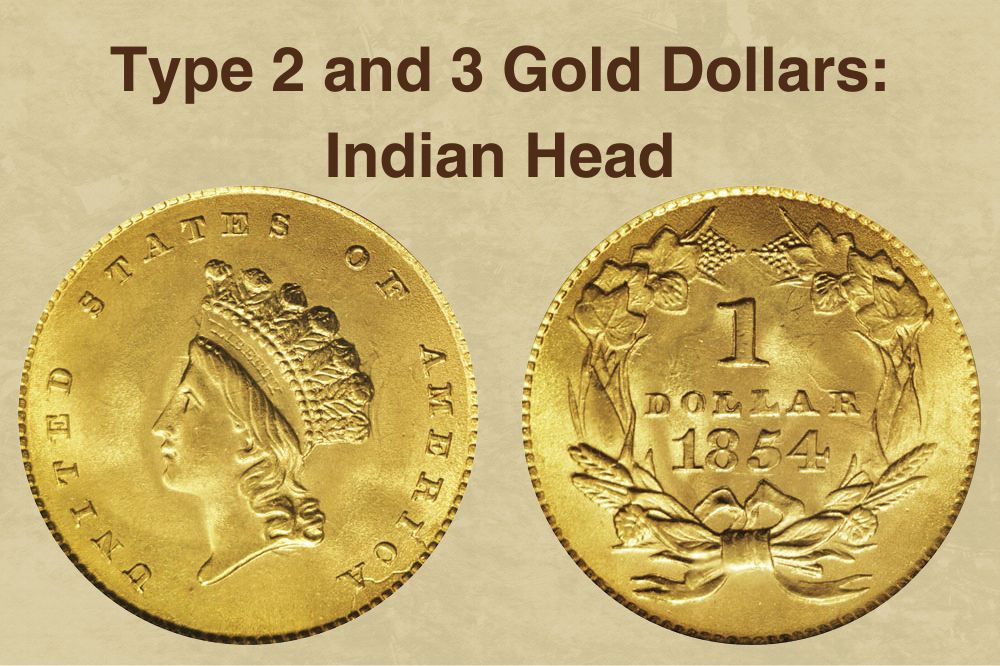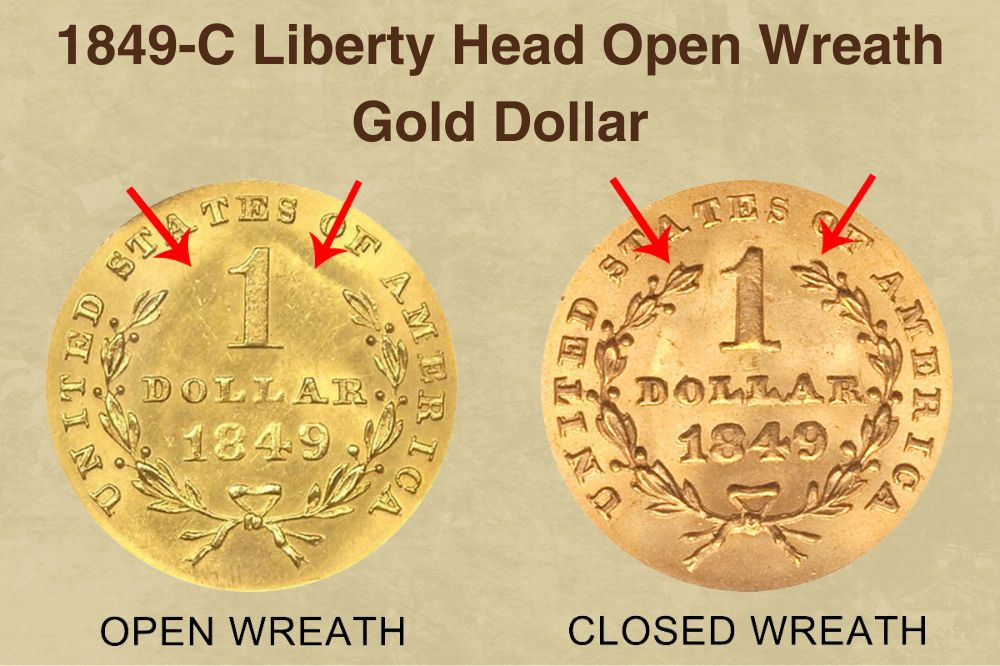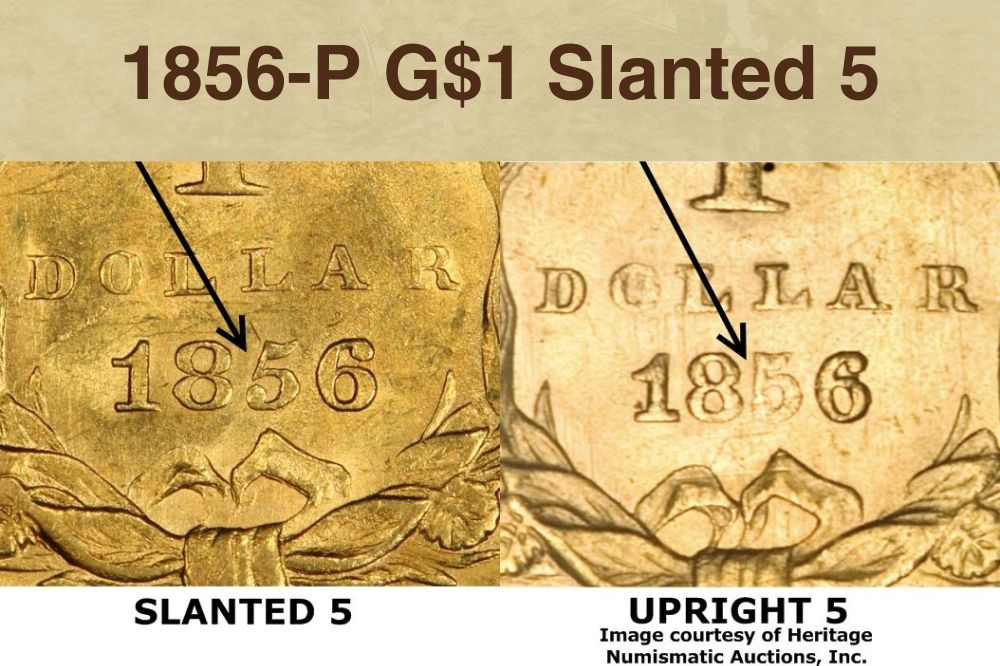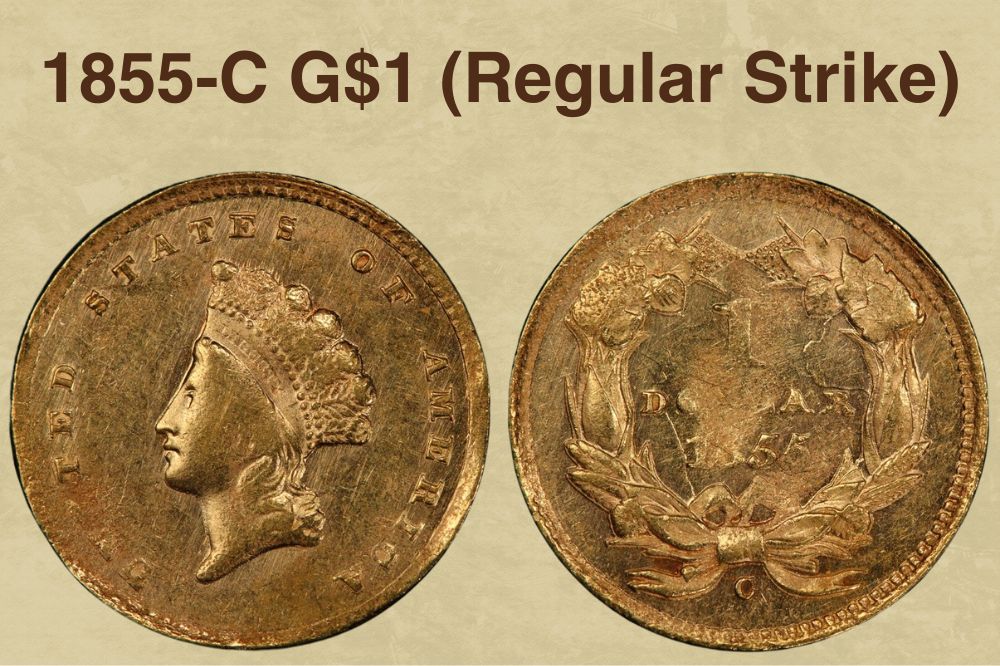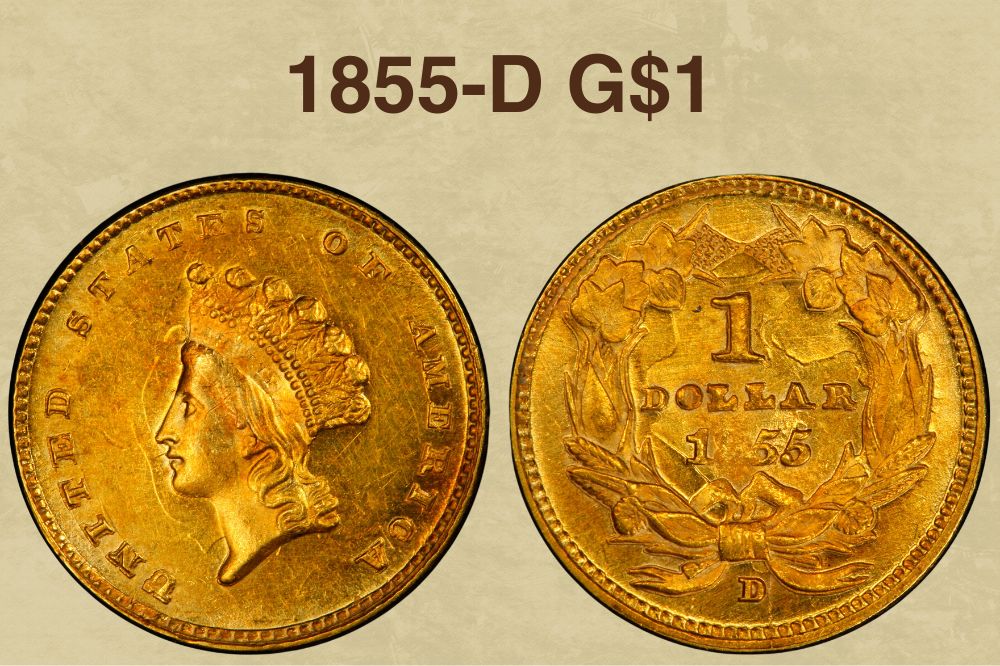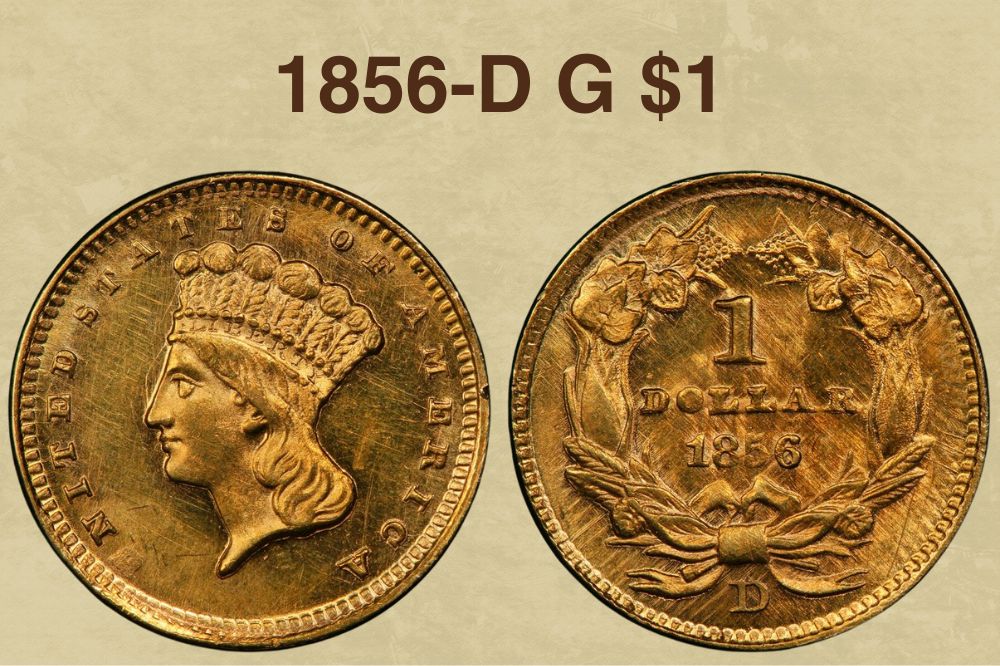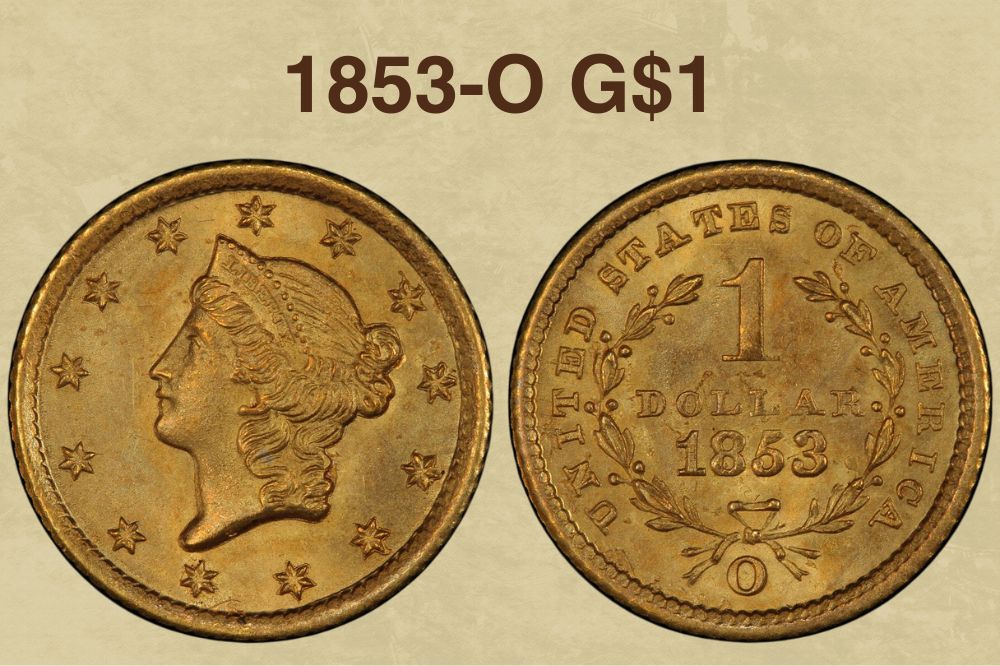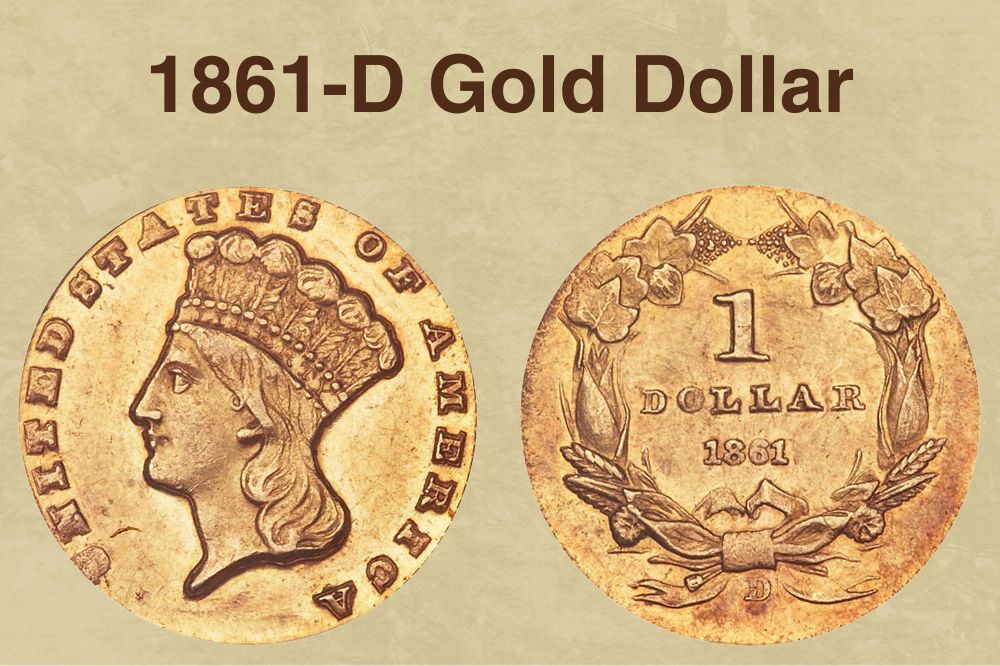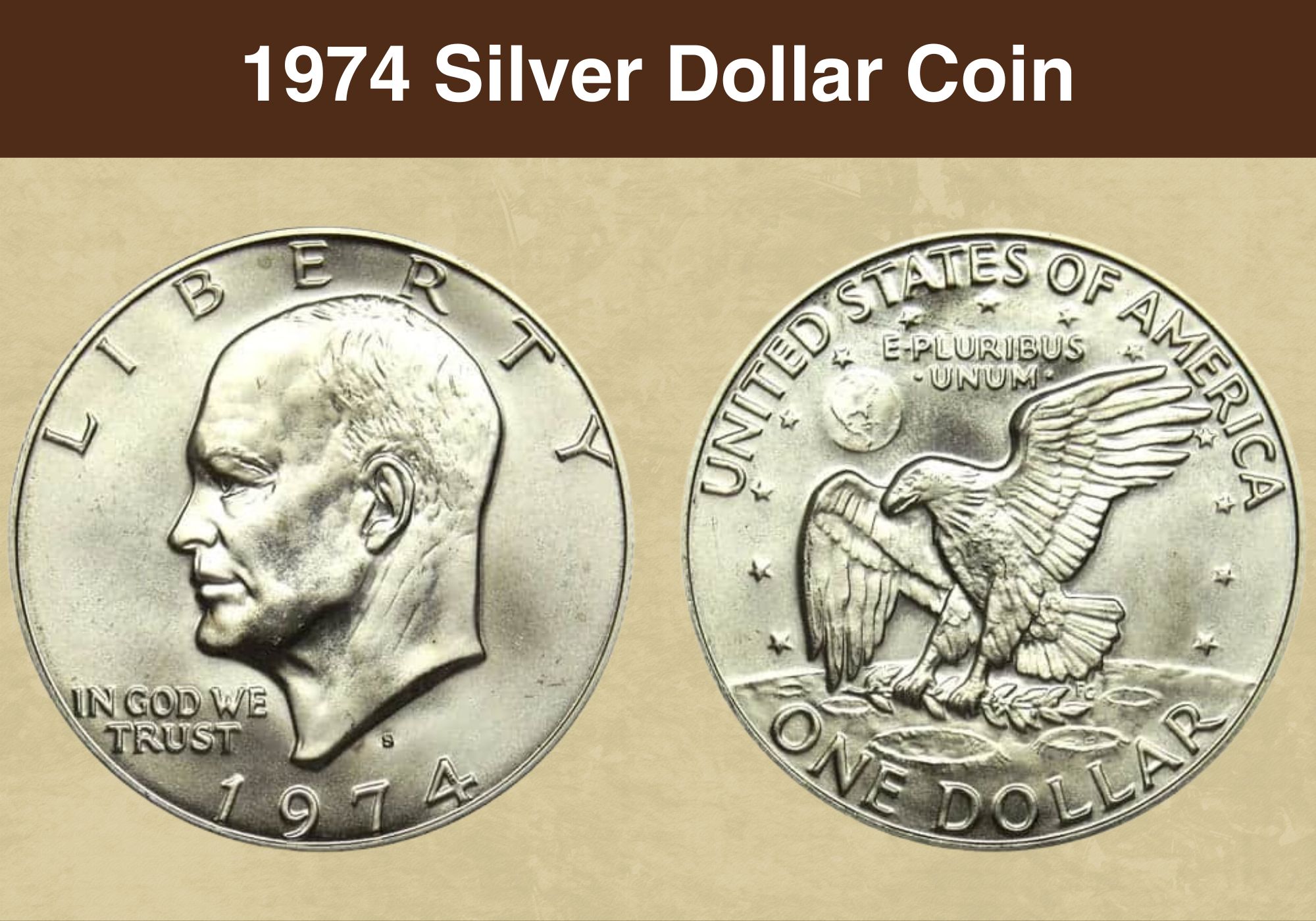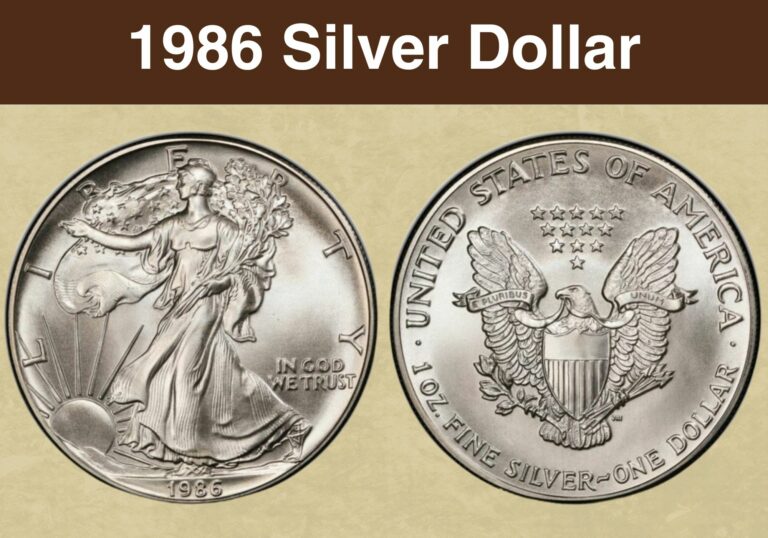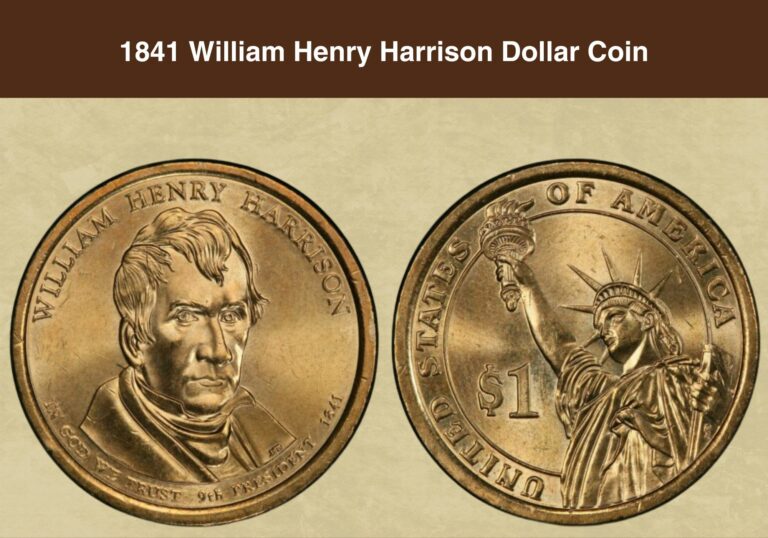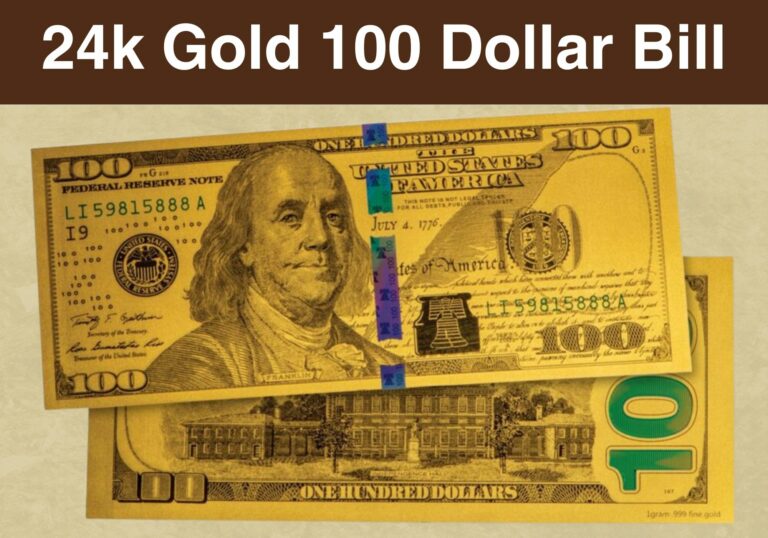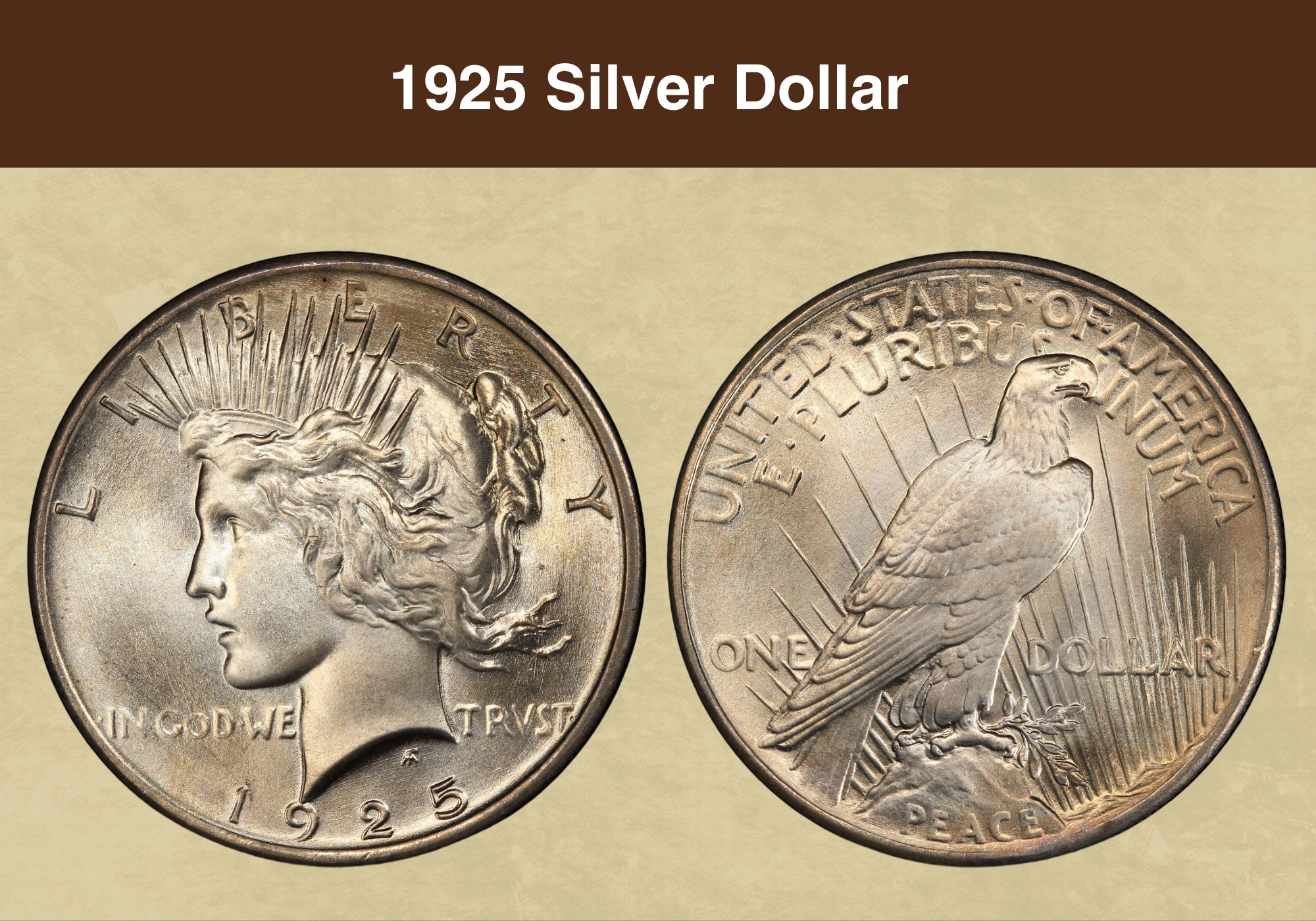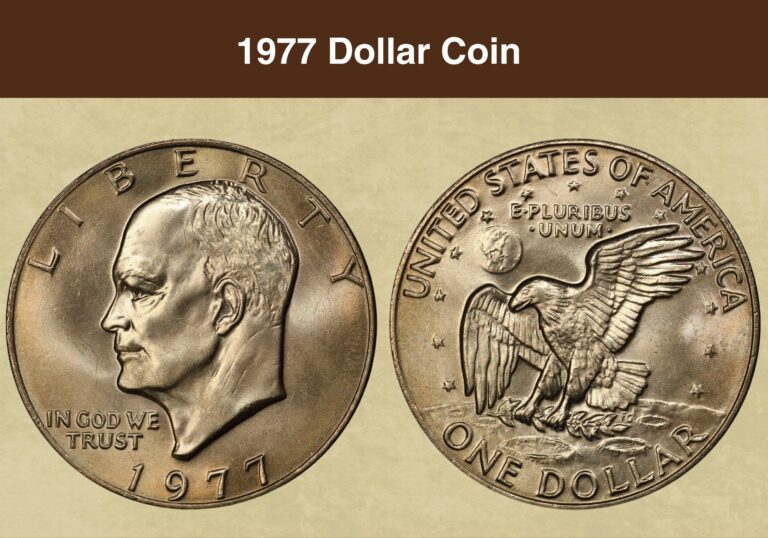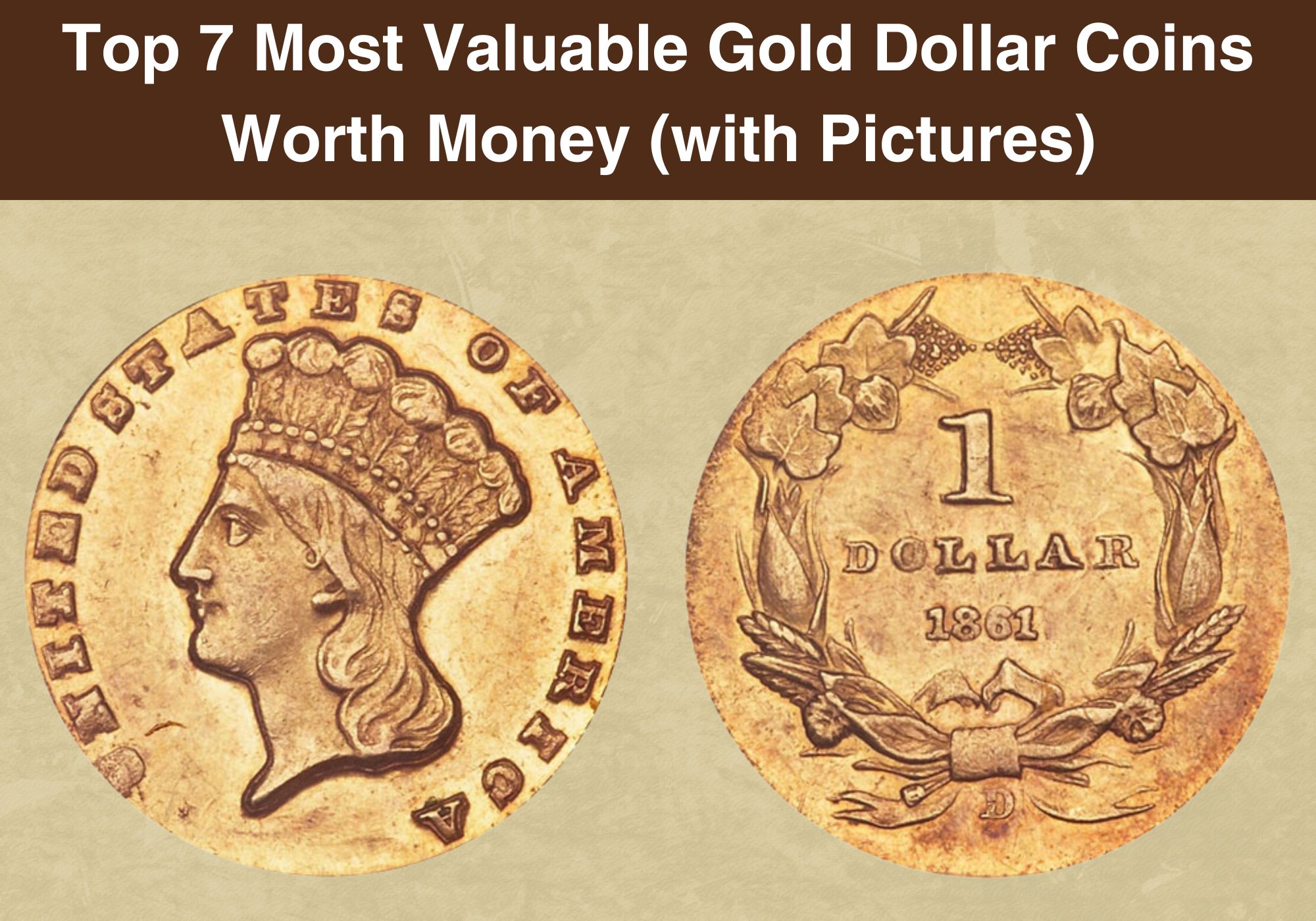
Coin Value Contents Table
Are you fascinated by the historical and numismatic significance of gold dollars?
Are you considering adding U.S. gold dollars to your collection and are curious how much these old coins are worth?
Perhaps you have come across a gold coin and are wondering how much it might be worth.
You’ve come to the right place!
I wrote this article to show you what the most valuable gold dollars worth money are. If you guessed that these coins might be worth a lot, you are right.
Most gold dollar coins are worth good money, so consider yourself lucky if you own one of these coins. You will likely also need solid money to purchase a high-value gold dollar.
Let’s jump in and find out: what are the most valuable gold dollars worth money?
The History of U.S. Gold Dollars
The United States Mint first struck gold dollars in 1849. Before this, several political representatives had recommended the introduction of a gold coin, but it was only until the peak of the California gold rush that Congress eventually authorized a circulating gold coin.
Aside from the gold rush, the fact that people were hoarding and exporting silver coins, creating a severe shortage in the market, also necessitated the creation of new coins made out of gold.
The U.S. Mint struck the styles of the gold dollar coin. The first, produced in 1849, was the smallest. This coin’s small size made it less popular among the citizenry, forcing the Mint to redesign it and produce a slightly bigger one in 1854. This is known as the Type II coin.
By 1856, the Mint unveils a new dollar gold coin. The coin spotted the portrait of a Native American lady on the reverse and a wreath of flowers on the reverse. This was the Type III gold dollar coin. Although it had the same diameter of 14.3mm, this new coin was easier to strike.
That said, the gold dollar was not as popular as the Mint had expected it to be. After only forty years of production and three reiterations, the last of these coins was struck in 1889
The gold dollar coins are categorized into two series, i.e. the Liberty Head and Indian Head series.
Type 1 Gold Dollars: Liberty Head
The Liberty Head series comprises the earliest dollar gold coins released between 1849 and 1854.
On the obverse, these coins feature Lady Liberty adorned in her iconic crown while her eyes gaze up towards the top of the coin. Thirteen stars surround Liberty’s portrait, representing the country’s original colonies.
The Liberty Head gold dollars’ reverse shows a wreath encapsulating the coin’s denomination and year date.
The inscription UNITED STATES OF AMERICA appears around the coin’s inner rim. Peter Filatreu Cross designed the reverse imagery.
Type 2 and 3 Gold Dollars: Indian Head
The other gold dollar category is the Indian Head series. The Type 2 variety was first produced in 1854.
Type 2 coins feature an obverse design similar to the one seen on Liberty Head gold dollar coins. But in place of her usual crown, Lady Liberty is adorned in a Native American headdress, which gives these coins a deep cultural and historical appeal.
The reverse of the Indian Head series features the same wreath with the denomination 1 Dollar, featured in the middle and the year date. The words UNITED STATES OF AMERICA are missing.
The Mint introduced Type 3 Indian Head gold dollars in 1856. These are the same size as the Type 2 variety but have a stronger strike.
Presidential Gold Dollar Series
You might have come across Presidential Series gold dollar coins, which feature portraits of our country’s presidents in the order they served in office.
The Mint struck presidential dollar gold coins from 2007 to 2011 as regular circulation coins and then in 2012 to 2016 as collectables for hobbyists.
Although these coins have a goldish appearance, they are actually not made of gold but rather from copper and manganese brass cladding. These coins are only worth their face value.
Let’s now explore the most valuable gold dollars worth money. Keep in mind that we are talking about the Liberty Head and Indian Head gold dollars produced between 1849 and 1889.
Also Read: Top 10 Most Valuable Presidential Dollar Coins Worth Money
Most Valuable Gold Dollars Worth Money
1. 1849-C Liberty Head Open Wreath Gold Dollar
Some of the 1849 Liberty gold dollars minted in Charlotte have a peculiar error. When you flip the coin over on the reverse, you will notice the space between the ends of the wreath is notably wider than on other gold dollar coins. These coins are known as open-wreath gold dollars.
The ones with a smaller space between the wreath ends are aptly known as closed wreaths. Unlike the open wreath, the closed wreath’s ends are closer to the number 1.
Waldo Newcomer, a well-known Baltimore collector, discovered that some 1849 Liberty Heads dollars had wider space between the wreath ends. This discovery only happened in 1933, many years after the coins were minted and circulated.
Only four or five 1849-C Liberty Head Open Wreath Gold Dollars are known to exist, making this the rarest coin the Charlotte Mint has ever produced. It is also among the rarest U.S. gold coins issued as a business strike.
One of the pieces was auctioned for a remarkable $6,000 at a 1956 American Numismatic Association (ANA) sale. A collector from North Carolina paid a whopping $35,000 for the second piece, which was graded Very Fine. There is no record of how much the third specimen was auctioned for.
2. 1856-P G$1 Slanted 5
In 1856, the Mint struck the Type III gold dollars. These coins were similar to the Type II variety in terms of their size but boasted a much better strike.
That year, the Mint produced gold dollars showing an upright number 5 in 1985 and an Italicized one. The Italicized version differed from the upright 5 seen on Type 1 and Type II dollars.
Despite being different, the slanted 5 gold dollars were struck in large numbers and are therefore readily available in the marketplace.
According to the Numismatic Guaranty Company, an 1856-P G $1 Slanted 5 is worth about $210 and $420 in circulated condition.
Uncirculated examples are extremely rare and will fetch as much as $50,000. The most expensive specimen was auctioned for a whopping $43,200 at a 2021 Heritage Auctions sale. The coin was graded MS68+.
3. 1855-C G$1 (Regular Strike)
The Mint introduced Type II Indian Princess Head gold dollars in 1854, enlarging the size and design of the coin. The following year, in 1855, the mint in Charlotte struck one-dollar gold coins, and this was the only Type II gold dollar to come from this mint.
In other words, the 1855-C gold dollar was a one-year issue, making it extremely popular among collectors. In 1856, the Charlotte mint abandoned the new Type II design and didn’t produce any more of these coins.
Something else that makes the 1855-C gold dollar outstanding is its poor strike, which makes grading difficult. This dollar coin is considered the worst-struck federal gold coin in numismatic circles.
This gold dollar is often over-graded. All in all, the coin is rare in grades AU55 to AU58, and only two known pieces may qualify as somewhat uncirculated, making this the rarest Charlotte gold dollar to find in higher grades.
Circulated examples graded Very Good are worth about $1,100, while a rare AU58 can fetch as much as $19,000.
PCGS records show that the most valuable 1855-C G$1 was sold for $37, 375. This extremely rare specimen was graded MS61 and was auctioned in 2011 at a Stack’s Bowers sale.
4. 1855-D G$1
In 1855, the Dahlonega mint struck Type II gold dollar coins and then stopped producing these coins. The 1855-D became the only Type II gold dollar coin ever struck at the mint and, therefore, the second-rarest Dahlonega gold dollar.
Being a one-year coin, the 1855-D gold dollar is extremely rare in all grades, especially in higher grades. Most known existing examples have a weak strike and severe die clash marks on the heads and tails side.
Some cataloguers have speculated that at least two dozen 1855-D G$1 exist today. What is certain is that these coins are extremely low grades and would only probably attain Extremely Fine as the highest grade. Only two or three known examples are speculated to exist in mint state.
Two of the uncirculated examples are graded MS64. One sold for an impressive $143,750 at an ANA sale in 2011, while the other fetched $164,500 at a 2015 Heritage Auctions sale.
5. 1856-D G $1
The 1866-D gold dollar is also a one-year coin. It is the only Type III gold dollar struck at the Dolahega mint, making it extremely rare and popular among collectors.
Most examples of this coin are poorly struck. The inscription and imagery are often rarely visible, making grading difficult. Usually, collectors rely on factors such as luster and texture to estimate the value of an 1856-D G $1.
Cataloguers estimate that fewer than a dozen examples exist, and most are seen in the Very Fine grade. Examples in higher grades are extremely rare, and the only known three ‘Uncirculated’ examples appear worn, making this one of the rarest Dahlonega gold dollars in Mint State.
In circulated condition, an 1856-D G $1 will fetch about $3,450 at grade Fine and as much as $17,000 for at grade AU58.
The most expensive uncirculated specimen was sold for a whopping $87,500. This gold dollar was graded MS6S2 and was auctioned at a 2021 David Lawrence RC sale.
6. 1853-O G$1
The New Orleans mint struck 290,000 gold dollars in 1853. Although this mintage is significantly lower than that of other mints such as Philadelphia and Denver, the 1853-O gold dollar is invariably the most readily available gold dollar across all grades.
It is also worth mentioning that the 1853-O is the best-struck gold dollar from this mint. Most examples boast a sharp luster with complete details on the obverse and reverse.
Although gem examples are rare, collectors will easily access examples in lower circulated and uncirculated grades.
So common is this gold dollar in lower circulated grades that examples typically fetch only a small premium. For example, you can buy an 1853-O G $1 graded Good at just $250. Even one graded AU58 is relatively affordable at about $585.
Cataloguers speculate that only two uncirculated and gem-quality examples of this coin exist. One of them, graded MS66, was auctioned for an impressive $26,400 at a 2019 Stack’s Bowers sale.
7. 1861-D Gold Dollar
The 1861-D is the rarest gold dollar minted at the Dahlonega facility, regardless of the mint. Only the uncollectible 1849 open wreath gold dollar surpasses this coin in rarity.
Its mintage is unknown, but it is estimated to be at least 1,200, with most examples showing a weak strike.
In April 1861, the Confederacy of American States took control of the Dahlonega Mint and struck a small number of gold dollars, making this the smallest mintage of all gold dollar coins in the United States. Today, it is believed that fewer than 100 examples exist.
The majority of surviving 1861-D gold dollars are graded lower on the scale. Any uncirculated specimens are extremely rare and are considered among the most desirable issues from the Dahlonega minting facility.
Circulated examples graded Fine are valued at about $9,500, while one graded AU58 is worth an estimated $66,500.
The most valuable 1861-D G $1 is graded MS64 and was sold at a 2020 Heritage Auctions sale for an eye-watering $180,000, making this the most valuable gold dollar worth money.
Summary
There you go: This is a comprehensive list of the most valuable gold dollars worth money. There is no doubt that gold dollars are every collector’s dream! These coins are not only historically symbolic but also very valuable and can be considered a financial asset.
If you are looking to add any of these gold dollars to your collection, you should definitely plan to spend some good money.
As always, it’s smart to consult a professional coin grading service before investing in high-ticket coins such as these extremely valuable gold dollars.

